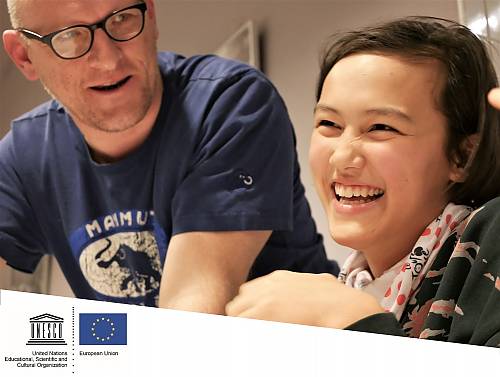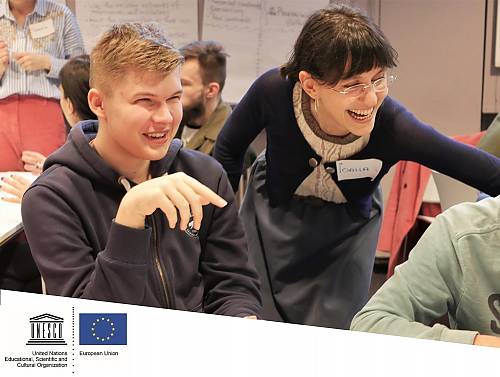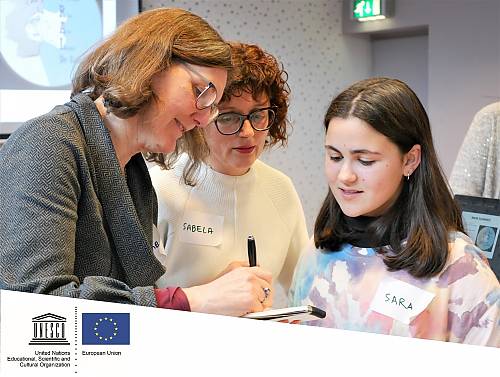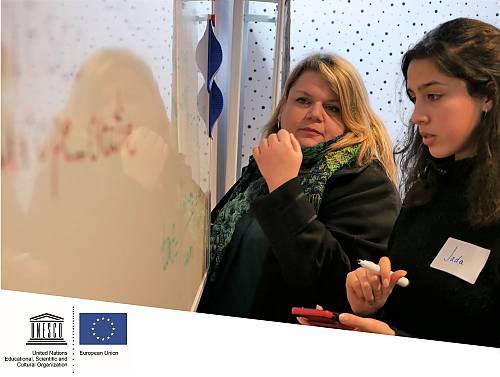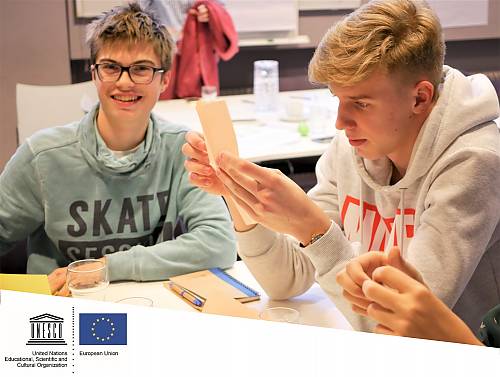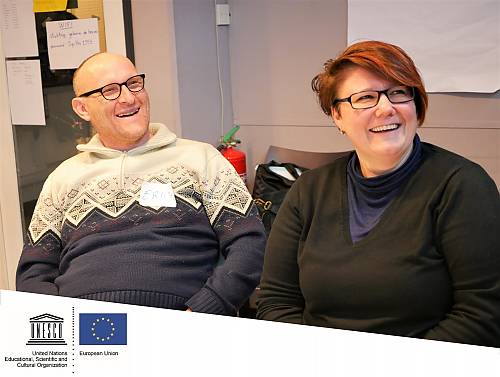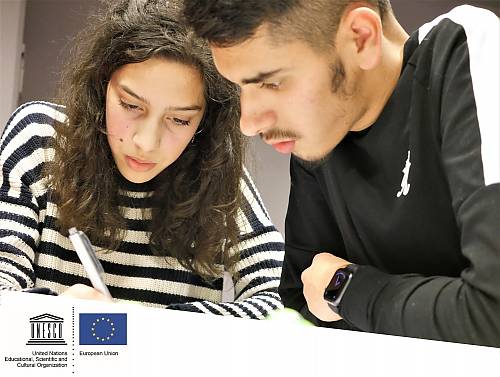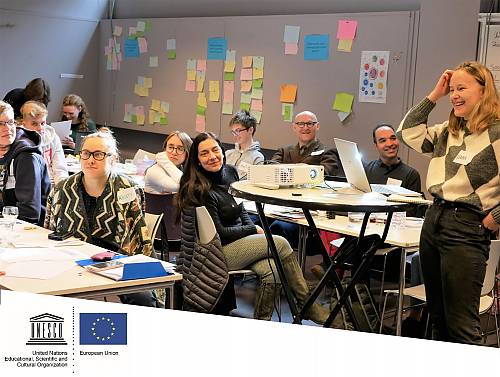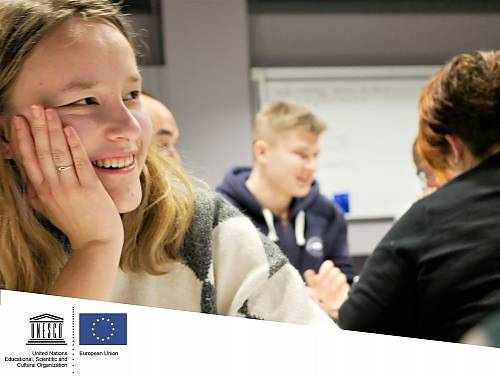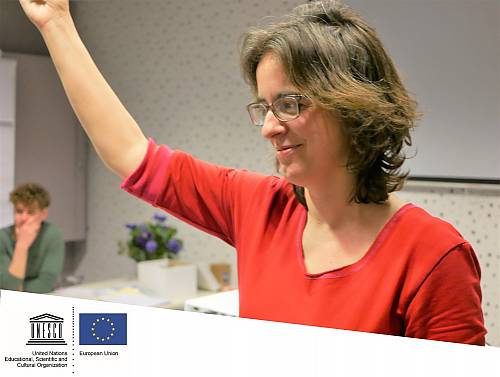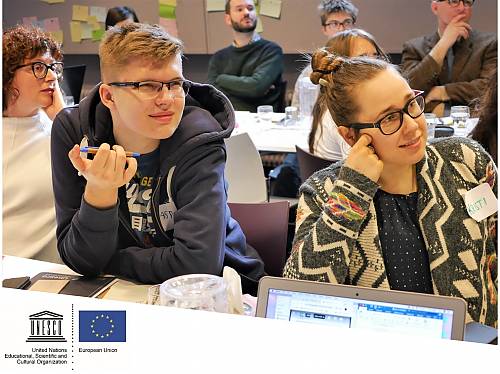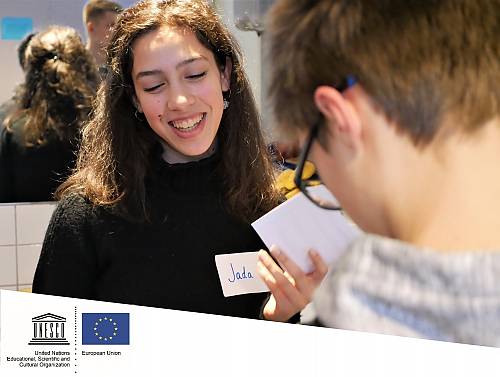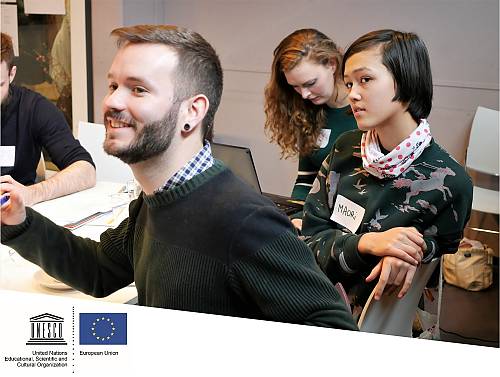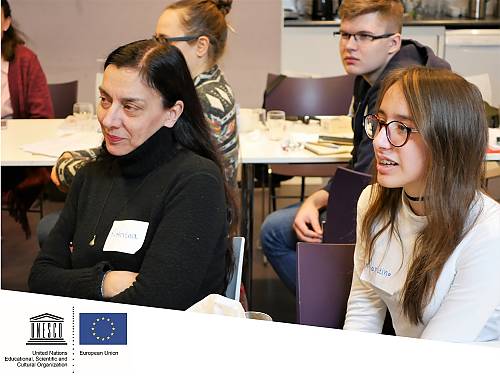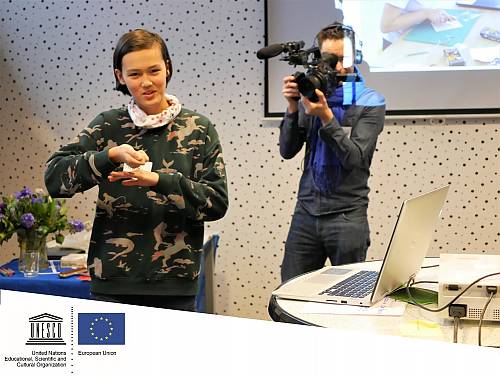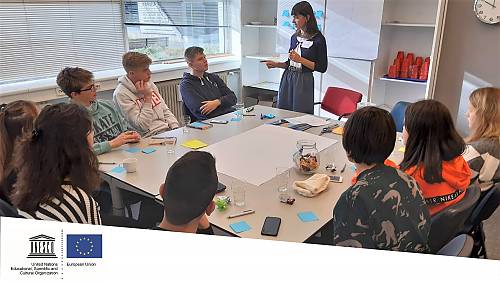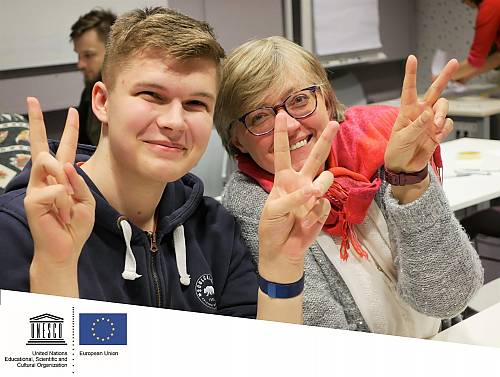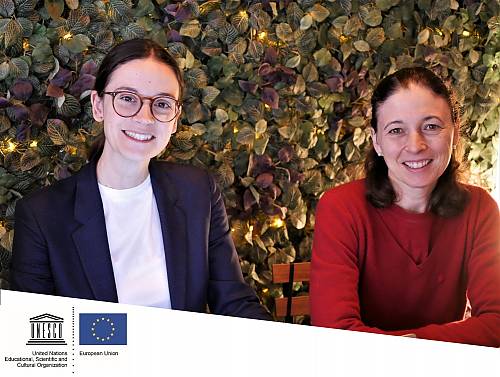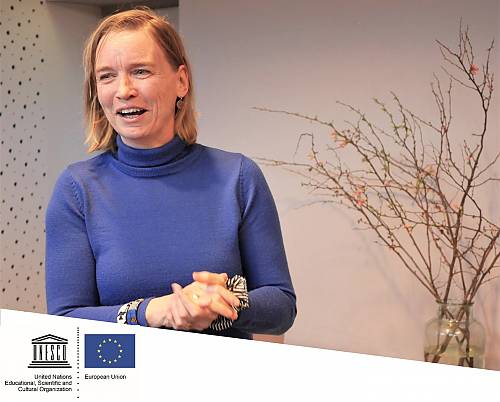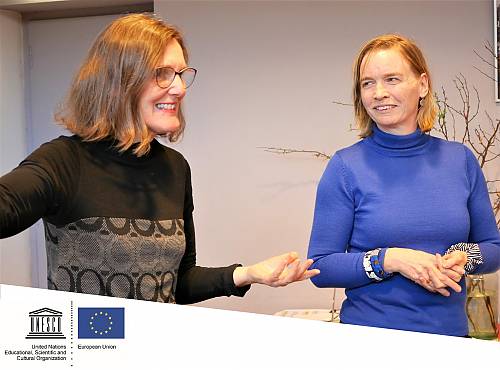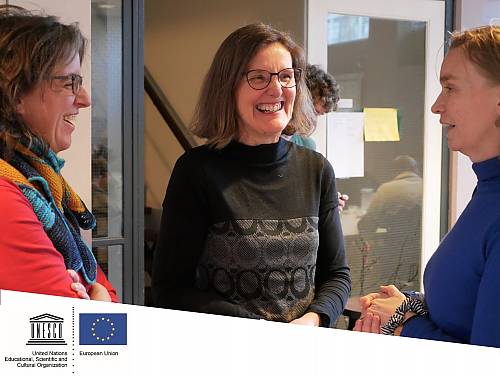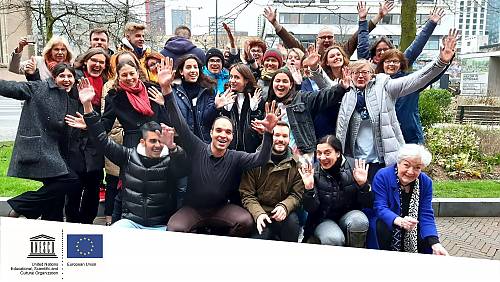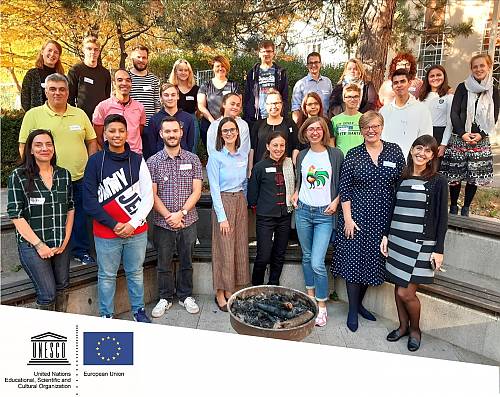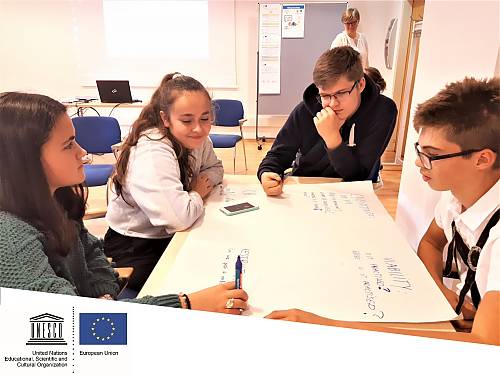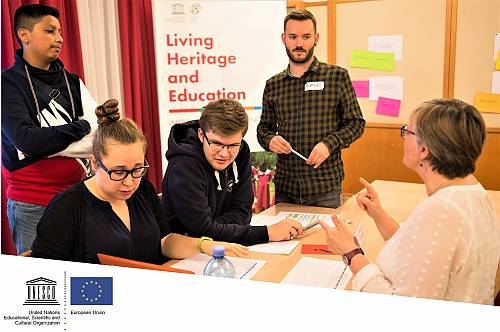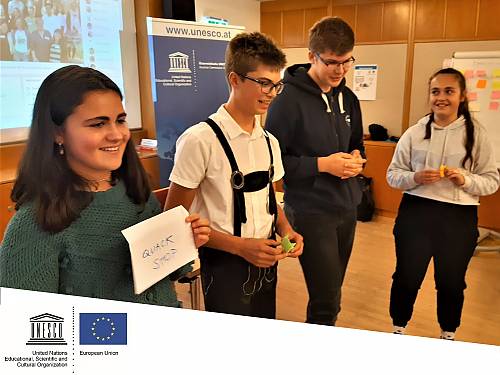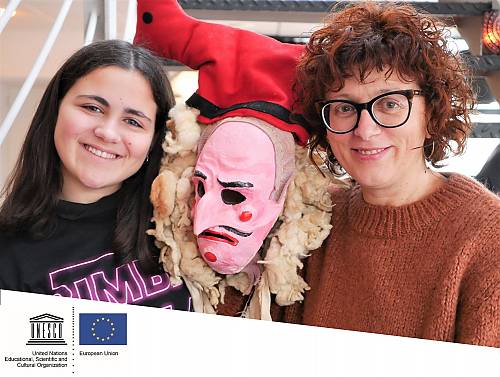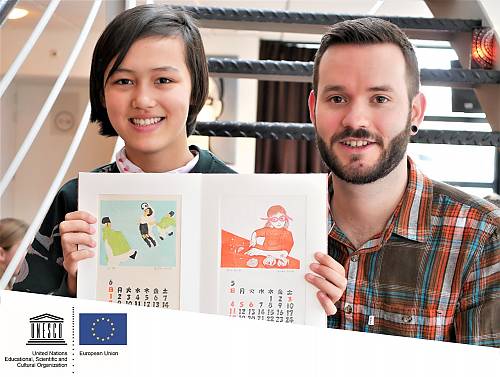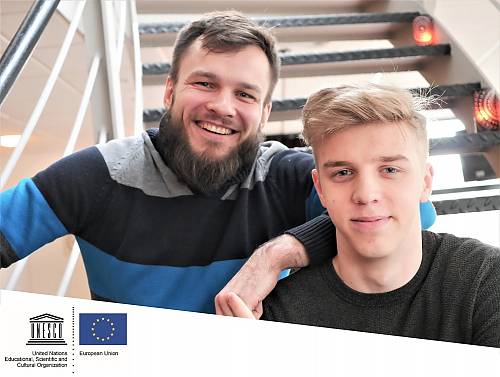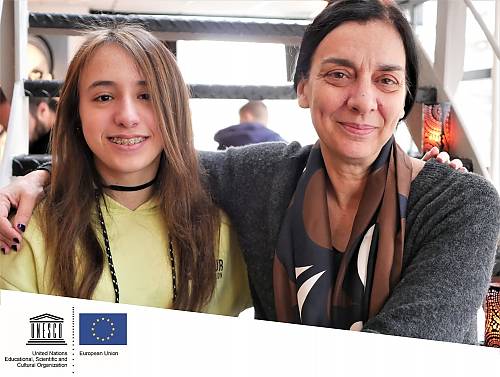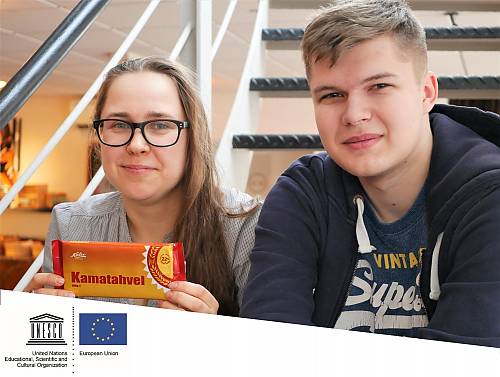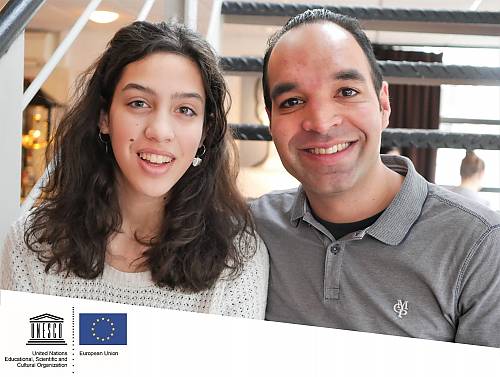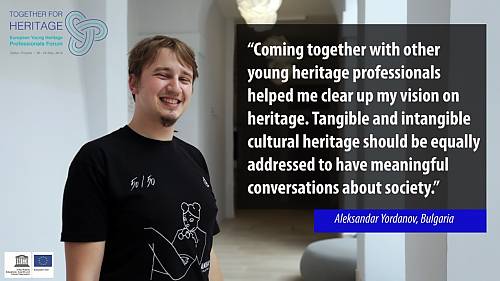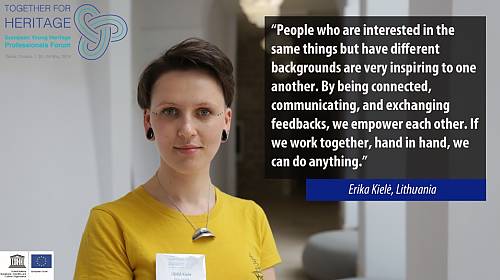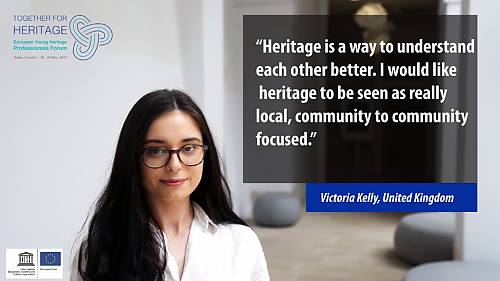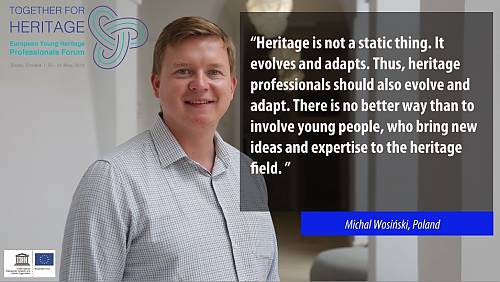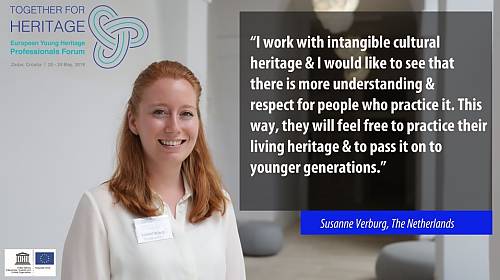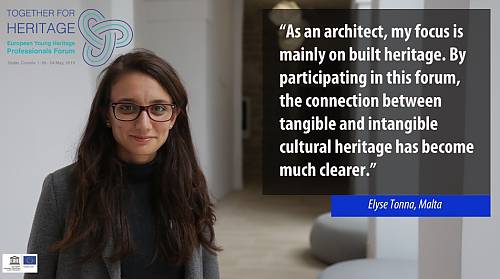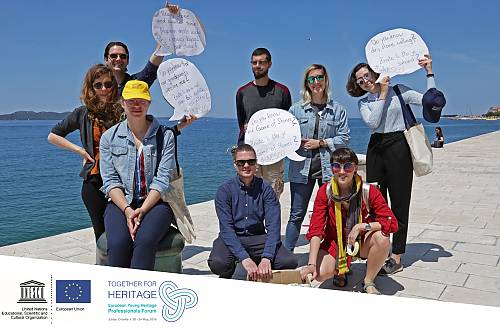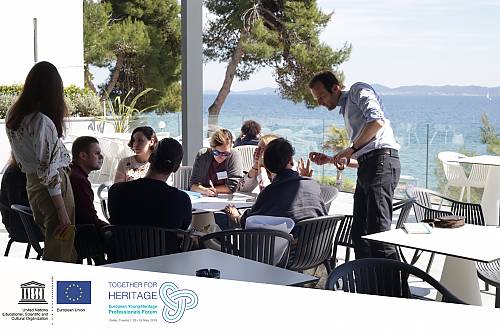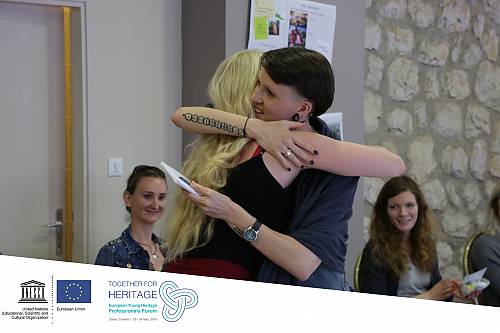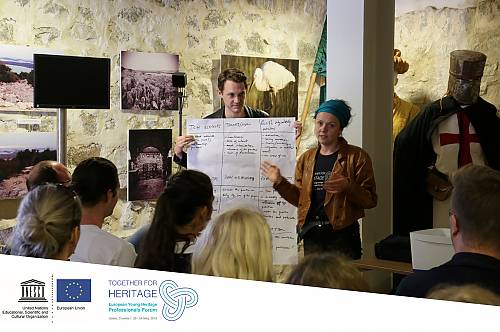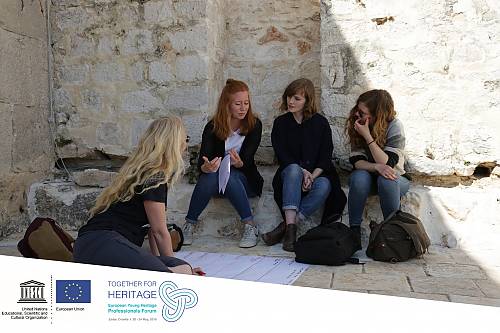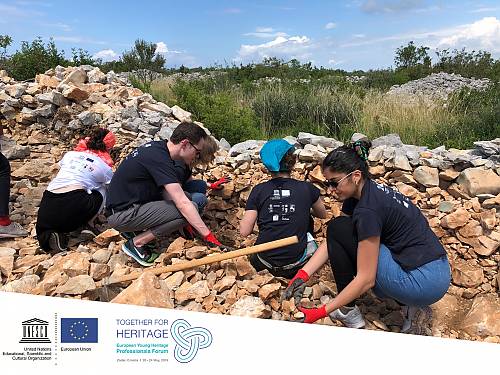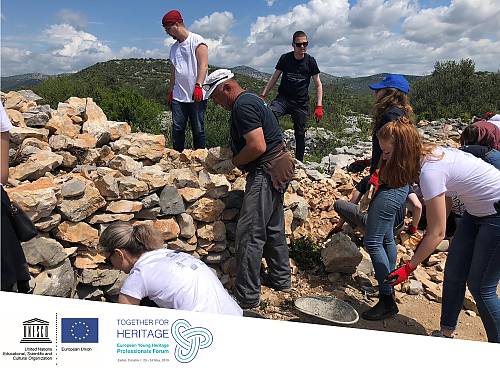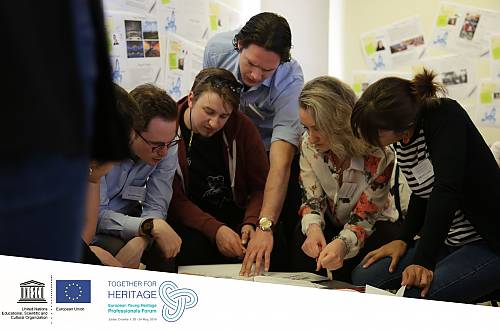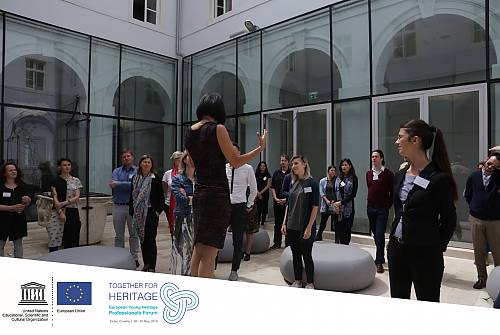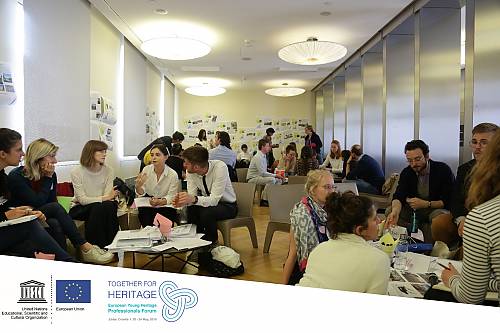
© UNESCO
The 2003 Convention recognizes the important role that education holds for the recognition of, respect for and enhancement of living heritage in society. The transmission of living heritage through formal and non-formal education is part of the proposed safeguarding measures at a national level. Teaching and learning with living heritage in primary and secondary schools also contributes to attaining Sustainable Development Goal 4 – Quality Education, in particular target 4.7. which advocates for the “appreciation of cultural diversity and of culture’s contribution to sustainable development”.
Initiated in the context of the European Year of Cultural Heritage (EYCH2018), the joint UNESCO-European Union project contributed to the long-term objectives of the Year by encouraging and stimulating young people to explore their cultural heritage and actively participate in its safeguarding and transmission.
The project stimulated active knowledge sharing and understanding of cultural heritage among young people, as well as critical thinking on the function and meaning of heritage in their lives and the lives of their families, communities and societies. The project activities generated examples of safeguarding cultural heritage through education, underlining its contribution to building an inclusive and sustainable Europe.
Upon completion of the project, schools, learners and young heritage professionals are expected to have a better understanding of the diversity of their cultural heritage and its importance for the future, and to be empowered to participate in its preservation and safeguarding.
The project 2018 European Year of Cultural Heritage: Engaging youth for an inclusive and sustainable Europe was implemented from January 2019 to June 2021 along two main components:
1. Teaching and Learning with Living Heritage in European Schools
2. The European Young Heritage Professionals Forum 2019
1. Teaching and Learning with Living Heritage in European Schools
“It was important to understand that by integrating living heritage in lesson plans and extracurricular activities, we also contribute to its safeguarding. Knowing that we are doing something with a greater impact, that we are playing a role in something larger, makes us feel very proud. After this experience, we will continue to teach with living heritage.” – Aikaterini CHRISTODOULOU (Greece), pilot project teacher.
In close collaboration with the UNESCO Associated Schools network in the European Union (ASPnet), UNESCO has carried out a series of activities to help schools explore how the living heritage present in the school communities can be integrated in lesson plans and extracurricular activities. This experience has confirmed that by teaching subjects such as mathematics, physics, computer-aided design/CAD or literature with living heritage, teachers can better contextualize the knowledge, stimulate students’ curiosity and promote safeguarding – all while making learning more exciting and accessible, and increasing the quality of education.
As an initial step, UNESCO has implemented a survey on the experiences that ASPnet schools in the EU may already have in integrating living heritage in school-based learning. The survey results and a set of policy recommendations formulated by the teachers are available in English and French together with ten examples of existing practices identified in primary and secondary ASPnet schools across Europe.
A series of innovative pilot projects of learning with living heritage across different core subjects was then implemented with the ten selected teams from UNESCO ASPnet schools in the European Union (one teacher and one learner) from Austria, Belgium, Cyprus, Czech Republic, Estonia, Greece, Lithuania, Poland, Spain and the Netherlands. Through adapted lesson plans or extracurricular activities, intangible cultural heritage (ICH) was included in different school subjects. Although this approach was new for many of them, it sparked curiosity, creativity, and enthusiasm as it proposed to learn subjects, such as mathematics, physics, CAD, languages, or social sciences in different, more engaging ways.
After an initial training workshop, the 10 teams selected living heritage elements that were relevant for them and their communities and accompanied by two UNESCO trained facilitators they developed and implemented pilot projects in close cooperation with other teachers, communities, local NGOs and their families. ICH bearers and practitioners were involved at different stages of the projects through online surveys, interviews, visits to their workshops or presentations where they shared their craft, knowledge and passion with the young. All pilot projects were documented and the ten case studies are available here. Three of these projects have been documented in short films that show the different approaches and types of experiences.
Based on the survey results and the lessons learnt from the 10 pilot projects, UNESCO developed a resource kit for teachers on how to integrate living heritage in school-based teaching. The kit includes a guidebook introducing a step-by-step methodology on how to integrate living heritage in teaching different subjects in primary and secondary schools, a set of 10 case studies, short films documenting 3 of the case studies and practical tools. The kit is conceived as a living document and will be completed as new materials become available.
Making living heritage part of the educational content and pedagogy contributes to achieving quality education (SDG 4), while raising awareness about the importance of ICH and its safeguarding. During the pilots, teachers have noticed an improvement of learning outcomes as living heritage helped connect theoretical knowledge with students’ everyday life, while motivating them to be more active and creative. It also stimulated multidisciplinary approaches and cooperation among teachers, which resulted in the use of more active and diversified teaching methods and tools. Learning with living heritage strengthened the connections between schools, families and communities and encouraged dialogue between generations.
It contributed to the learners’ wellbeing, helping them to explore their identities and build self-respect, socio-emotional skills and positive worldviews.
2. The European Young Heritage Professionals Forum 2019
“Heritage it is an inherent part of our identity. It is a way to understand each other better” said Victoria Kelly, one of the participants to the EYHPF that gathered young practitioners working on tangible or intangible cultural heritage safeguarding. Participants from the 28 Member States of the European Union came together to discuss the multifaceted realities of working in the field of cultural heritage at the local, national, and international levels.
As a new generation of professionals and Cultural Heritage Messengers, they bonded over a common vision for heritage, in which tangible and intangible heritage are inextricably linked and the active participation of local communities is indispensable for their protection and safeguarding.
The European Young Heritage Professionals Forum took place in Zadar, Croatia, from 20 to 24 May 2019. The Forum developed in close cooperation with the NGO Diadrasis was hosted by the Croatian Commission for UNESCO and the Ministry of Culture of the Republic of Croatia.
Read more about the Forum here

